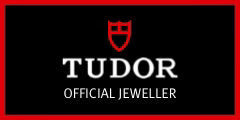How do I choose the right diamond?
Choosing the right diamond starts with understanding the four Cs: cut, color, clarity, and carat weight. These key characteristics are like a diamond's fingerprints, unique to each stone and essential in determining its beauty and value. By familiarizing yourself with these traits, you can confidently select a diamond that aligns perfectly with your preferences and budget. Additionally, consider the diamond's shape and setting, as these elements can enhance its overall appearance and brilliance.
Whether you're looking for a timeless round brilliant or a more unique marquise, the right combination of these factors will ensure your diamond not only sparkles but also reflects your personal style. Dive into the details to discover a diamond that truly resonates with your vision.
What are the 4c's of diamond quality?
The 4Cs, are the globally accepted standard for assessing the quality of a diamond —color, clarity, cut and carat weight.
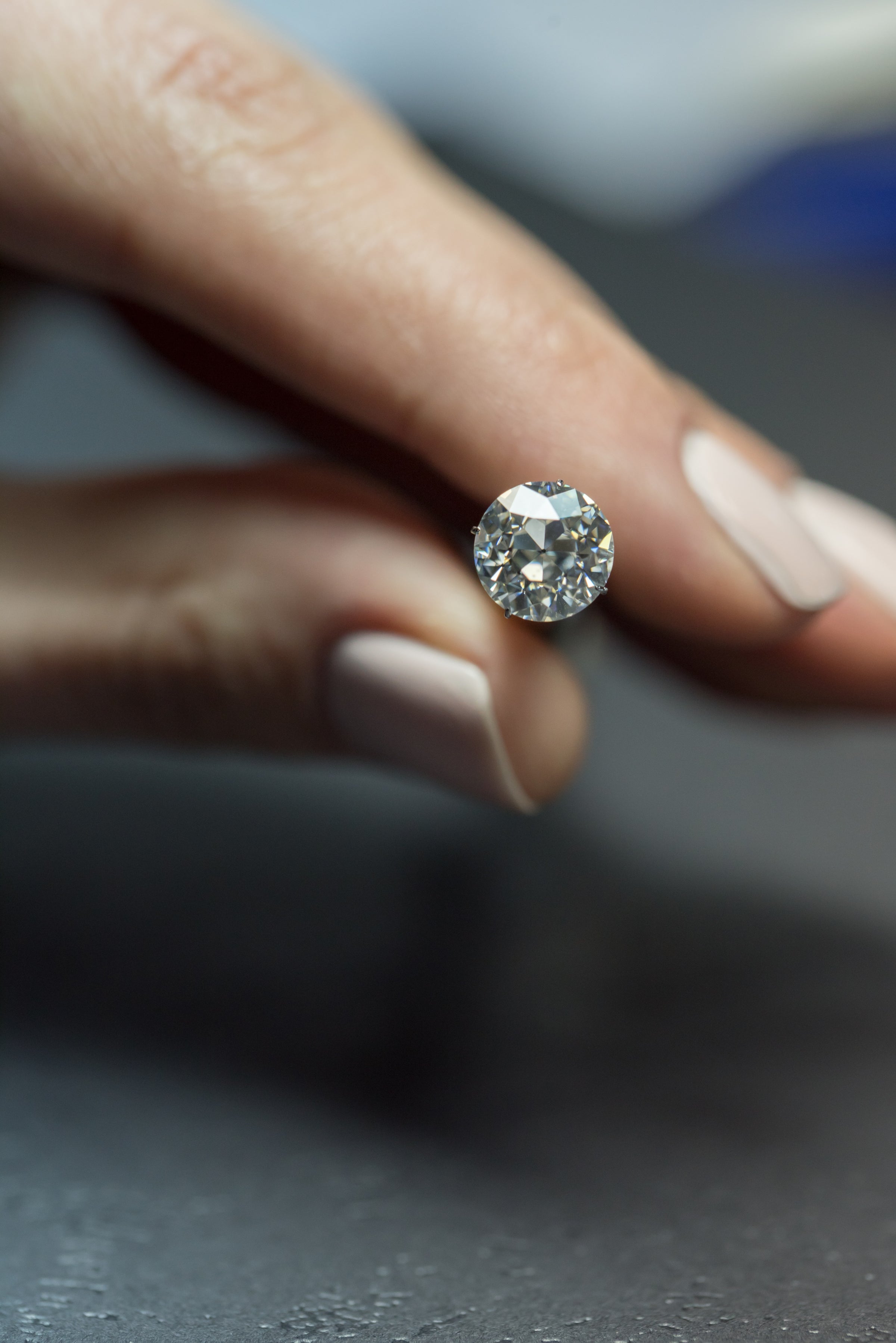
GETTING STARTED WITH
The 4Cs
Grasping the 4Cs—cut, color, clarity, and carat—is key when picking out a diamond, as they determine its quality, rarity, and value. Understanding what each C means and deciding which ones are most important to you simplifies the selection process, empowering you to choose a diamond that truly reflects your style and meets your expectations.
1. Cut: Round's Most Crucial Facet
What Does "Cut" Mean?
The term "cut" doesn’t refer to the shape of a diamond, like round or pear. Instead, it’s about how well a diamond’s facets interact with light, influenced by the workmanship—proportion, symmetry, and polish—of the stone. This workmanship determines how brilliantly a diamond shines.
Achieving the perfect cut is crucial as it directly impacts a diamond’s beauty and overall value. Understanding these details helps in choosing a diamond that not only looks stunning but also represents a worthy investment. Remember, when it comes to diamonds, the precision of the cut can make all the difference.
Why Diamond cut quality matters:
- Brilliance: The total light reflected from a diamond.
- Fire: How light disperses into colors of the rainbow.
- Scintillation: The sparkle and pattern of light as the diamond moves.
How is a diamond cut graded?
Diamonds are graded from 'Excellent' to 'Poor' based on their cut quality:
- Excellent to Very Good: These diamonds reflect light beautifully, making them appear vibrant and lively.
- Poor: A diamond with a poor cut may look dull and lifeless, as it reflects less light.
Factors in Diamond Cut Quality:
- Proportions: How the facets are angled to optimize light reflection.
- Symmetry: How precisely the facets align and intersect.
- Polish: How smoothly the facets are polished.
Diamond Pavilion Depth and Its Impact:
The diamond pavilion depth, or the distance from the girdle to the bottom of the diamond, plays a key role in how light is directed through the diamond. An ideal pavilion depth keeps light from escaping out the sides or bottom, ensuring the light travels back through the top to enhance the diamond’s brilliance.
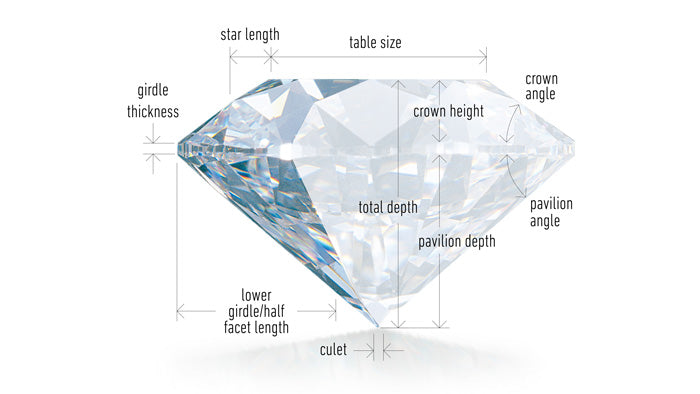
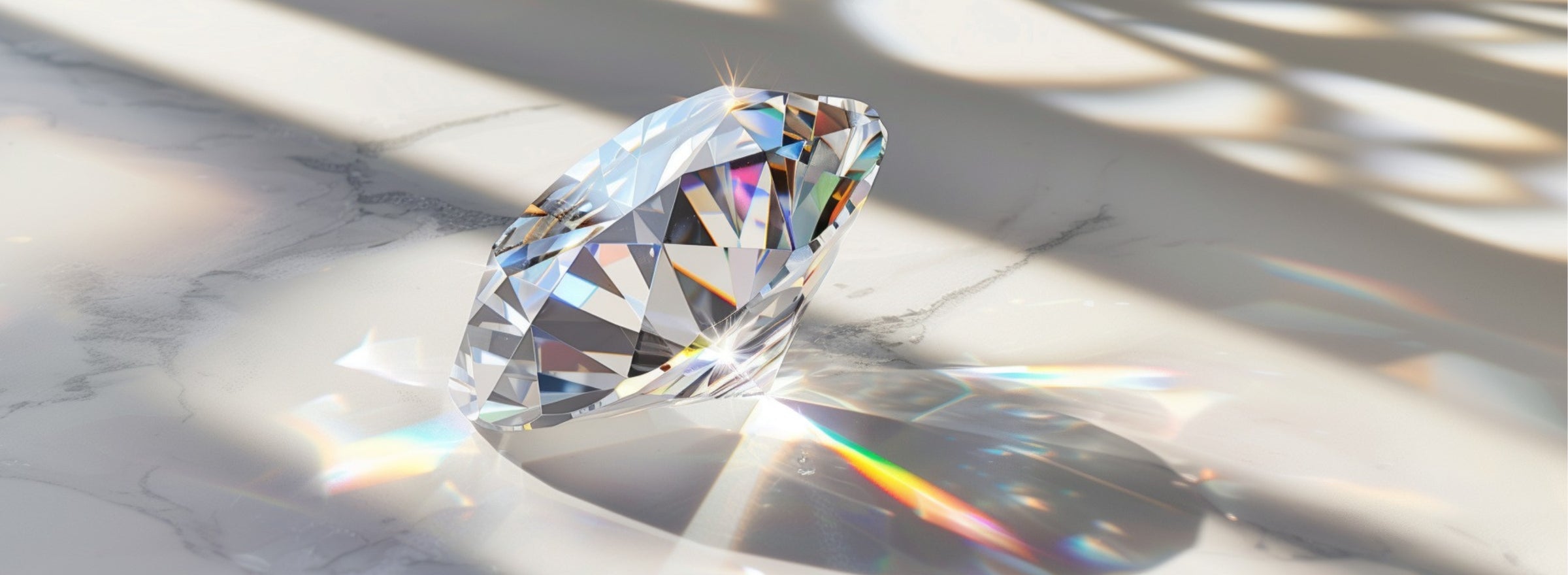
the science behind
The Sparkle
The quality of a diamond’s cut is the most complex of the 4Cs to analyze. For standard round brilliant diamonds, which are most common in jewelry, the GIA evaluates how facets are proportioned in relation to one another and how they affect the diamond's interaction with light. This involves detailed measurements of angles and lengths which determine the diamond's face-up appearance.
2. Color: Less is More
What is Diamond Color?
Contrary to what you might think, when jewelers talk about diamond color, they're actually referring to the lack of color. The ideal "colorless" diamond is like a drop of pure water—completely clear and devoid of any hue.
The D-to-Z Diamond Color Scale:
- D Grade: Absolutely colorless. The highest color grade, which is extremely rare.
- Z Grade: Noticeable light color, typically yellow or brown hues.
Diamonds graded beyond Z fall into the "fancy color" category and are valued differently, often sought after for their unique colors.
Why Diamond Color Grade Matters:
- Value: The clearer the diamond (closer to D), the more valuable it is.
- Appearance: Less color means more sparkle, as clear diamonds reflect light better.
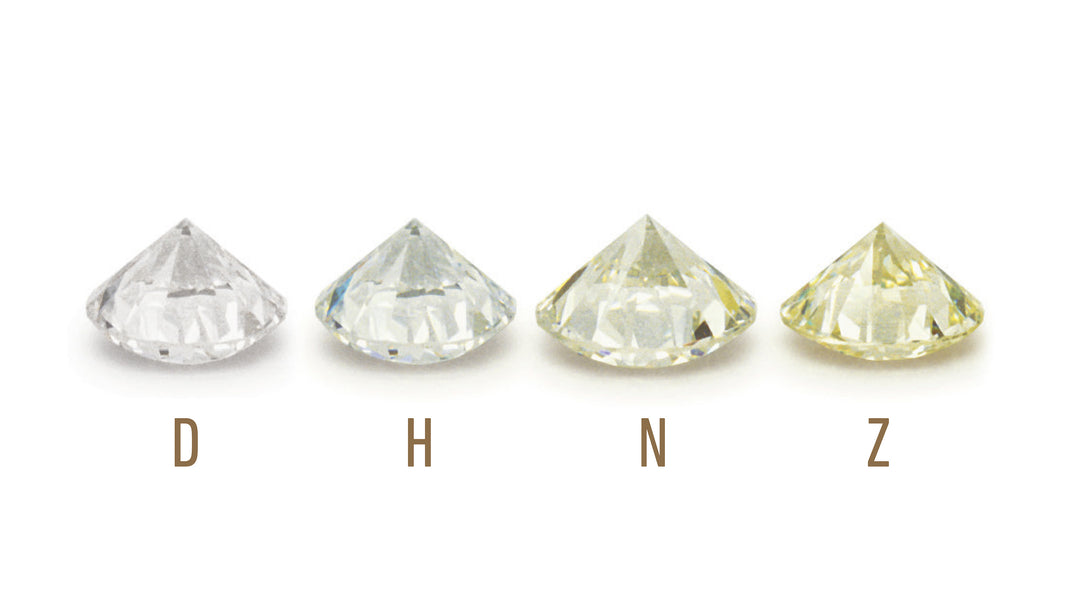
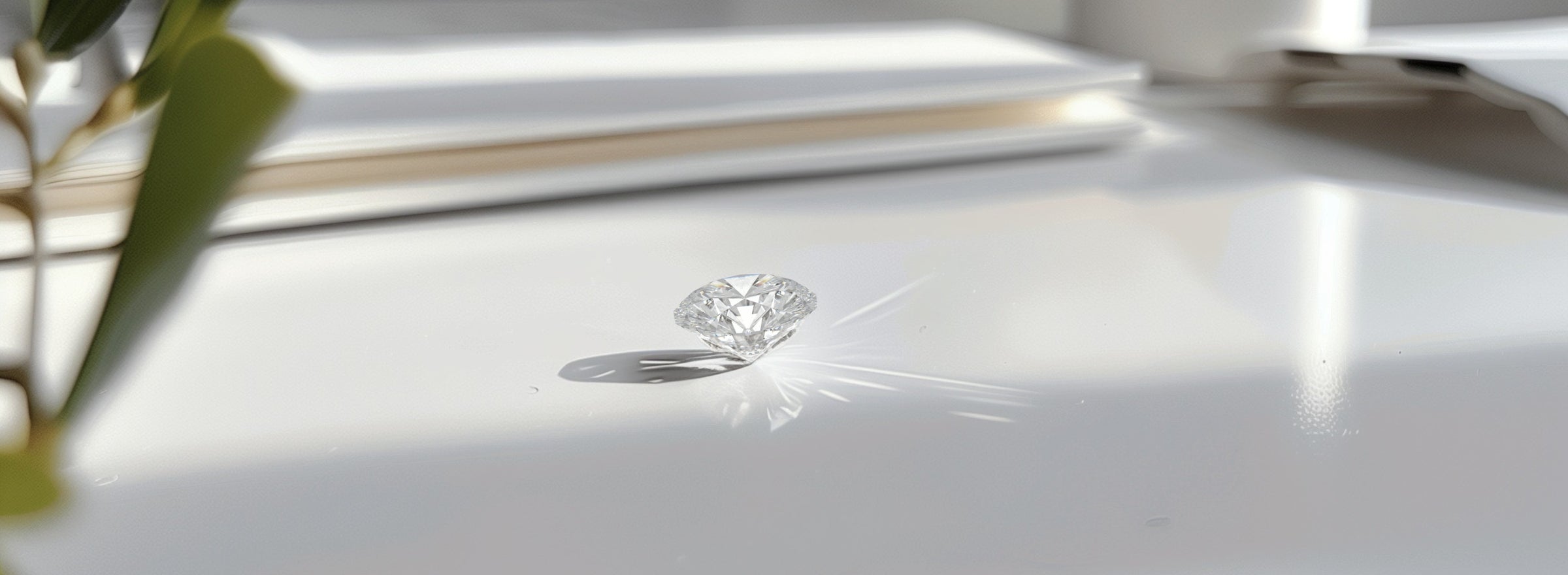
Indistinguishable
Subtleties in Diamond Color
The differences in color can be so subtle that they’re often indistinguishable to the untrained eye. However, these slight variations can significantly impact the quality and price of the diamond.
3. Clarity: Eye of the Beholder
Why does diamond clarity matter?
The level of clarity can greatly impact a diamond's value and beauty. Understanding these grades helps you make a more informed decision, ensuring you get a diamond that meets your expectations and budget.
Even if some inclusions are not visible without magnification, knowing the clarity grade helps assess the overall quality and worth of a diamond.
Understanding Diamond Clarity:
Diamond clarity refers to how clean a diamond is from inclusions and blemishes:
- Inclusions: Internal flaws like tiny crystals or fissures.
- Blemishes: Surface flaws such as chips or scratches.
Diamond Clarity Grades Explained:
Clarity is graded from 'Flawless' to 'Included' based on what can be seen at 10x magnification:
- Flawless (FL): No inclusions or blemishes.
- Internally Flawless (IF): No inclusions, only minor blemishes.
- Very, Very Slightly Included (VVS1 and VVS2): Minuscule inclusions hard to see even for skilled graders.
- Very Slightly Included (VS1 and VS2): Minor inclusions visible with effort.
- Slightly Included (SI1 and SI2): Inclusions noticeable under magnification but often invisible to the naked eye.
- Included (I1, I2, I3): Obvious inclusions, potentially affecting the diamond's brilliance and durability.
Choosing the Right Diamond Clarity:
- While no diamond is perfectly pure, the closer it is to purity, the better its clarity.
- Diamonds with clarity from Flawless to VS2 typically don’t have inclusions visible to the naked eye, offering good value.
- Diamonds graded I1 or lower show obvious inclusions, which can detract from the stone's beauty and structural integrity.


Clarity unseen
Hidden details that define Diamond value
To the casual observer, two diamonds may look the same, yet their clarity can vastly impact their value and price. Many diamond inclusions are microscopic, requiring a trained eye and specialized tools for accurate assessment.This nuance highlights the importance of professional grading. Certified gemologists can detect and evaluate these minor flaws, providing clarity on the true quality and value of the diamond.
4. Carat: Not a size, but a weight
Carat refers to the weight of a diamond and is a primary factor in its size and value. One metric carat is defined as 200 milligrams, and each carat can be subdivided into 100 points. This precise measurement system allows diamonds to be weighed to the hundredth decimal place. For example, a jeweler might call a diamond that weighs 0.25 carats a "twenty-five pointer."
Diamond Appearance and Size
While carat weight indicates a diamond's size, how large the diamond appears can also depend on its cut and proportions. For instance, a one-carat diamond with a wider, shallower cut may appear larger than a one-carat diamond with deeper, more exact proportions.
Diamond Carat and Value
The value of a diamond increases with its carat weight because larger diamonds are rarer and more visually striking. However, it's essential to consider that diamonds of the same carat weight can vary significantly in value based on their color, clarity, and cut.
Balancing the 4Cs
While carat weight is a crucial aspect of a diamond's appeal and value, it's important to balance all four Cs (Carat, Color, Clarity, and Cut) when evaluating a diamond's quality and price. Understanding this balance will help you make a more informed decision, ensuring you choose a diamond that truly meets your expectations in every aspect.
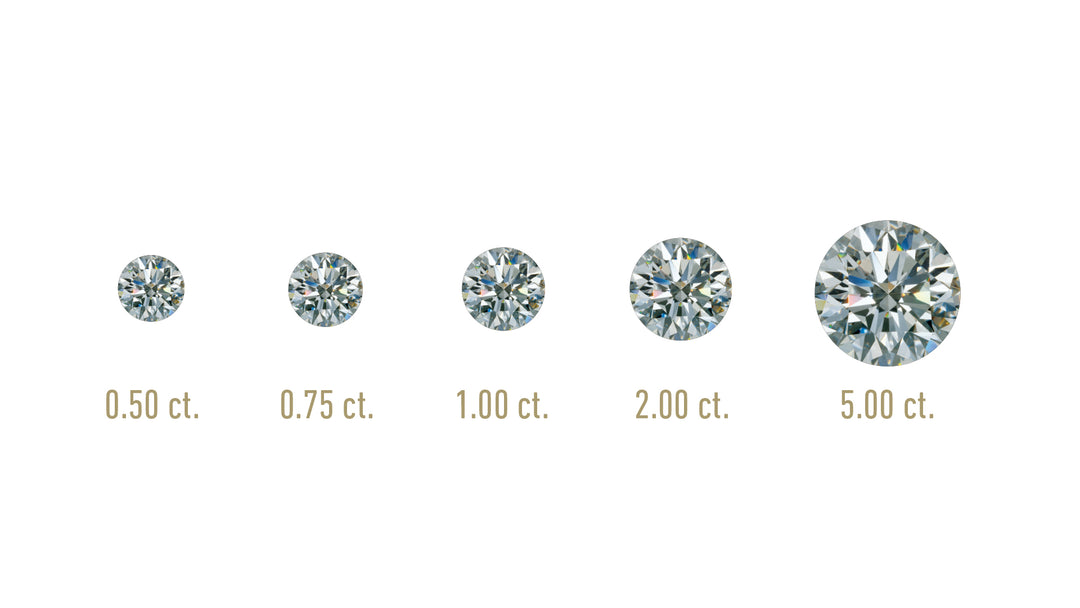
What to do next
For more information about shopping for a diamond or engagement ring, download our Ultimate Engagement Ring Guide.
If you're ready to dive in
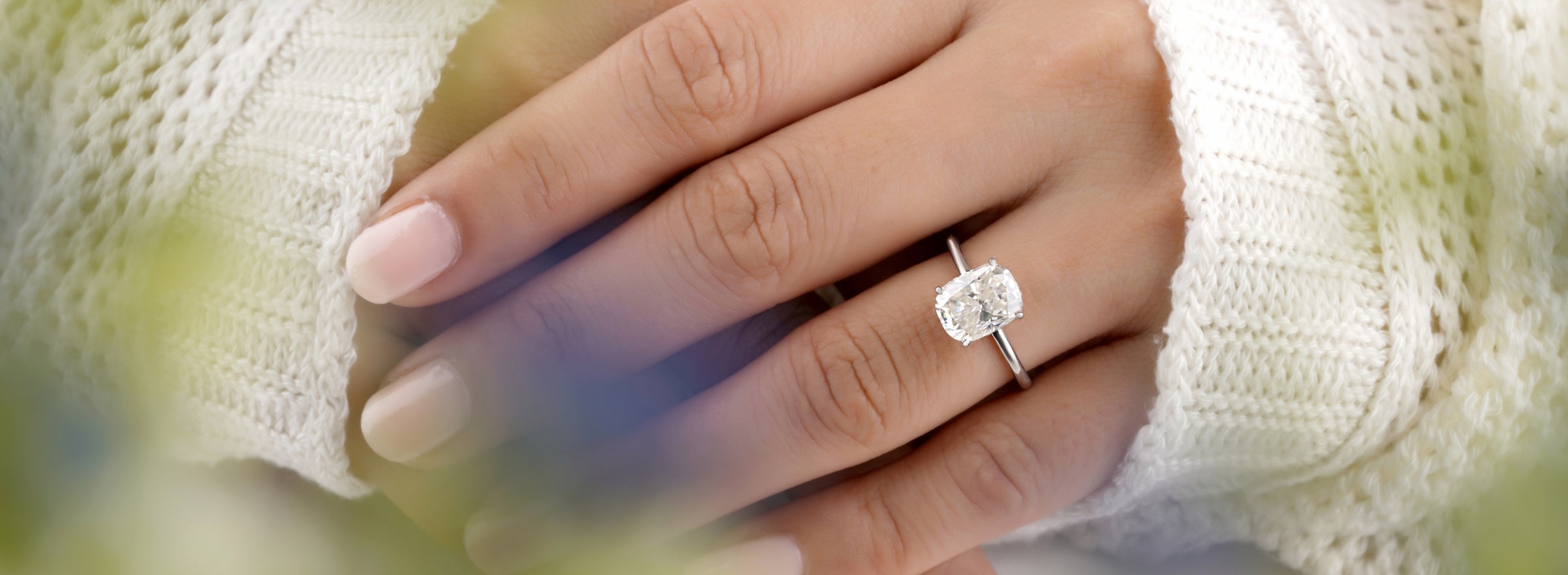
DOWNLOAD FREE
Ultimate Engagement Ring Guide
Don't miss out on our in-depth look at diamonds and how to shop for an engagement ring. With our guide, you'll explore:
- The anatomy of a ring
- How to set your budget
- What info to have prepared
- Red flags to avoid & more!
Diamond FAQs
Our guidebook is your go-to resource for everything about diamond and engagement ring shopping. It offers practical advice on setting your budget and deciding whether to bring your partner along. Plus, it dives deep into the essentials of ring anatomy and provides a detailed look at the 4Cs of diamonds. You'll also find tips on spotting red flags and so much more.
The short answer is - whichever one matters most to you.
The quality of a diamond is shaped by the interplay of the four Cs, but many argue that for round diamonds the cut is paramount. The cut of a round diamond is the biggest influence in its brilliance, fire, and overall aesthetic appeal. Ultimately, it's what makes it sparkle.
When it comes to any other shape, the beauty is in the eye of the beholder. We take a deep dive into this on our Mini Masterclass Series on our podcast, Drinks & Diamonds.
Absolutely! Our approach puts knowledge first, ensuring you're well-informed every step of the way. Your Diamond Specialist will proactively guide you through the unique qualities of each diamond, helping you understand the nuances of diamond grading. Get ready to become a diamond expert in your own right!
It all starts with the 4Cs: cut, color, clarity, and carat weight. Don’t worry — you don’t need to memorize them. We’ll walk you through each step, show you the differences in person, and compare stones side-by-side so you can feel both inspired and confident in your choice.
We’re people-people, so we love when you drop by. Most clients, though, prefer an appointment — it lets us prepare for you and make the most of your time together with a diamond specialist. It really depends on your style: spontaneous and in-love, or intentional and making a date of it. Either way works, and we’re here for both.
Natural diamonds are formed deep within the earth over billions of years, giving them their rarity and lasting value. Lab-created diamonds are manufactured in a controlled environment and often appeal as a more budget-conscious option. During your visit, we’ll walk you through both so you can confidently choose what best fits your style and story— and either way, you can’t go wrong when it comes to love.
Yes. Many couples choose to celebrate anniversaries and milestones by upgrading their diamond. With our lifetime diamond upgrade, you can trade in your natural diamond at any time and put its value toward a new one. It’s one of the ways we help your diamond grow with your love story. Learn more about our lifetime guarantees here.
For more than a century, couples in Cincinnati have trusted Richter & Phillips to help them find the diamond that marks their story. Our downtown showroom holds the Tri-State’s largest selection of loose diamonds — from timeless classics to unique cuts — all supported by in-house gemologists and a local team who will be here for you long after the “yes.”
There’s no “right” number. Budgets vary, and we meet clients where they are. Because we carry the Tri-State’s largest diamond selection, you’ll be able to explore a wide range of options and find one that balances beauty, quality, and budget.
During your visit, our team can walk you through plans that best fit your needs.
Why choose a brick-and-mortar jeweler over online-only retailers?
With diamonds, it’s not just about where you buy — it’s about how. Shopping for a diamond feels different in person. It’s a defining moment to view them in real life, side by side, see how they sparkle, and know which one belongs in your story. And no website can give you the kind of care and personal relationship you get with a jeweler who’s right here for you, year after year.
We could sell diamonds online with a click of a button, but that’s not who we are. We’re in the people business. For us, that means slowing down, listening, and making sure you feel cared for every step of the way. If you want to know what that’s really like, just read our Google reviews — our clients say it better than we ever could.
